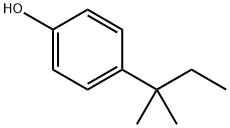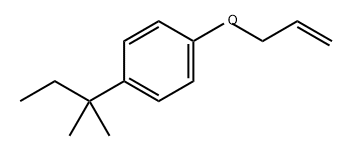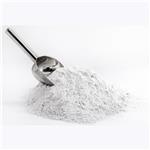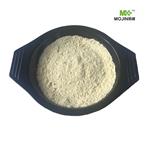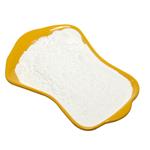Chemical Properties
solid
Uses
4-tert-Amylphenol was used as an esterogen receptor (ER) ligand.
Uses
Demulsifiers, Biocides, Fragrances
Uses
In the manufacture of oil-soluble resins; has been recommended as a germicide and fumigant; intermediate for organic mercury germicides, for pesticides, for chemicals used in rubber and petroleum industries.
Definition
ChEBI: P-tert-Amylphenol is an alkylbenzene.
General Description
Colorless needles or beige solid.
Air & Water Reactions
Insoluble in water.
Reactivity Profile
Phenols, such as 4-tert-Amylphenol, do not behave as organic alcohols, as one might guess from the presence of a hydroxyl (-OH) group in their structure. Instead, they react as weak organic acids. Phenols and cresols are much weaker as acids than common carboxylic acids (phenol has Ka = 1.3 x 10^[-10]). These materials are incompatible with strong reducing substances such as hydrides, nitrides, alkali metals, and sulfides. Flammable gas (H2) is often generated, and the heat of the reaction may ignite the gas. Heat is also generated by the acid-base reaction between phenols and bases. Such heating may initiate polymerization of the organic compound. Phenols are sulfonated very readily (for example, by concentrated sulfuric acid at room temperature). The reactions generate heat. Phenols are also nitrated very rapidly, even by dilute nitric acid. Nitrated phenols often explode when heated. Many of them form metal salts that tend toward detonation by rather mild shock. 4-tert-Amylphenol can react with oxidizing materials.
Health Hazard
ACUTE/CHRONIC HAZARDS: 4-tert-Amylphenol is toxic by ingestion and can be absorbed through the skin. Hazardous fumes are evolved when 4-tert-Amylphenol is heated to decomposition.
Fire Hazard
4-tert-Amylphenol is combustible.
Flammability and Explosibility
Flammable
Safety Profile
Moderately toxic by ingestion andskin contact. A skin and severe eye irritant. Combustible.When heated to decomposition it emits toxic fumes. Tofight fire, use dry chemical, water mist, CO2. Incompatiblewith oxidizing materials.
Purification Methods
Purify via its benzoate, as for phenol. After evaporating the solvent from its solution in ether, the material is recrystallised (from the melt) to a constant melting point. The benzoyl derivative has m 60o (from EtOH). [Berliner et al. J Am Chem Soc 76 507 1954, Huston et al. J Am Chem Soc 67 899 1945, Beilstein 6 H 548, 6 I 269, 6 II 506, 6 III 1965, 6 IV 3383.]
